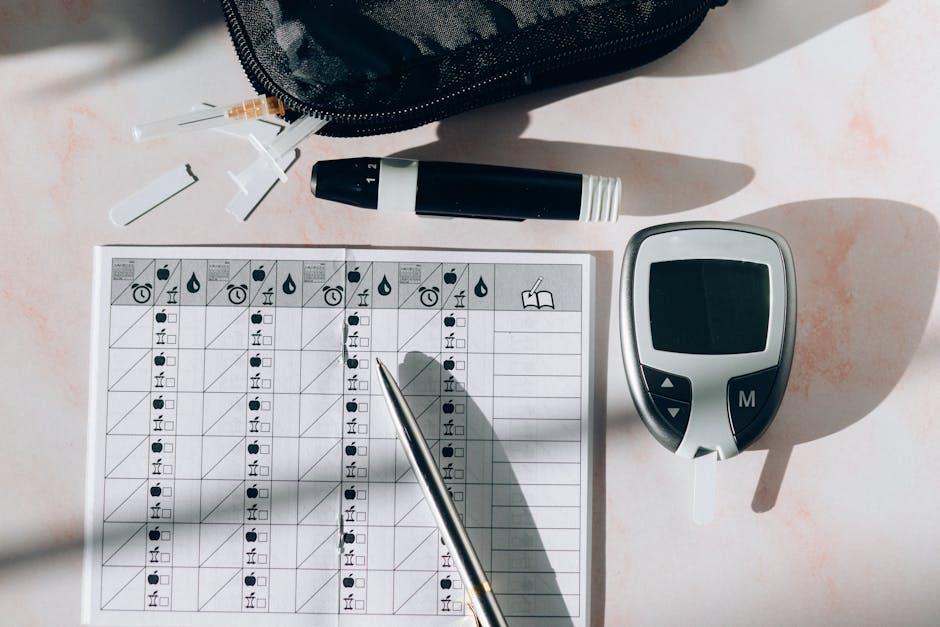Imagine your body as a high-performance engine, designed to run not just on the sugar rush of carbs but on the steady, efficient fuel of fat. This metabolic shift, called ketosis, is gaining popularity for its potential to enhance energy, sharpen focus, and support weight management. But how do you know when you’ve actually entered this unique state? More importantly, once you’re there, how can you keep your body humming along in ketosis without stalling? In this article, we’ll explore the subtle and not-so-subtle signs that indicate you’ve crossed into ketosis and share practical tips to maintain this fat-burning mode for the long haul. Whether you’re a curious newcomer or a seasoned keto traveler, understanding these signals and strategies is key to unlocking the full benefits of this fascinating metabolic journey.
Understanding the Early Signals of Ketosis Activation
When your body first shifts into ketosis, it sends out subtle yet distinct signals indicating that it’s burning fat for fuel instead of carbohydrates. These early signs often manifest as a unique combination of physical sensations and changes in bodily functions. For instance, many experience a dry mouth and increased thirst, which results from the body’s rapid depletion of glycogen stores and the subsequent loss of water weight. Alongside this, a noticeable surge in energy and mental clarity might occur, as ketones provide a more stable source of fuel for your brain than glucose. However, some may initially feel mild fatigue or headaches as the body adapts — these symptoms are temporary and usually resolve as ketosis deepens.
Monitoring these cues can help you stay on the right path and optimize your ketogenic journey. Paying attention to your breath and urine can also be revealing. A distinct fruity aroma on your breath, often called “keto breath,” signals the presence of acetone, a type of ketone. Some find it helpful to track changes in their appetite and digestion; a natural reduction in hunger is a common effect caused by ketones influencing hunger-regulating hormones. To better visualize the typical early signals, the table below summarizes their characteristics:
| Early Signal | Description | Common Experience |
|---|---|---|
| Increased Thirst | Body loses water weight as glycogen is burned | Dry mouth, frequent urination |
| Keto Breath | Presence of acetone gives a fruity scent | Distinct breath odor |
| Energy Shift | Ketones providing steady fuel | Mental clarity, improved focus or fatigue |
| Appetite Changes | Hormonal adjustments reduce hunger | Decreased cravings and reduced meal frequency |

Decoding Physical and Mental Changes in a Ketogenic State
Embarking on a ketogenic journey triggers a fascinating transformation within your body and mind. Physically, one of the earliest signs is increased energy stability, as your system shifts from glucose dependence to fat adaptation. You might notice a subtle reduction in hunger and cravings, accompanied by a distinct change in breath odor—often described as fruity or acetone-like, a direct result of elevated ketone levels. Muscle endurance may improve as glycogen stores dwindle and fat becomes a more efficient fuel source. Some individuals experience temporary symptoms such as headaches or fatigue, popularly known as the “keto flu,” signaling the body’s initial adjustment phase.
Mentally, entering ketosis can sharpen focus and enhance cognitive clarity, sometimes referred to as “keto clarity.” This is due to ketones providing a more consistent energy supply to the brain than glucose. However, it’s common to encounter mood fluctuations or slight irritability during early adaptation as neurotransmitter balances adjust. To nurture these changes, prioritize adequate hydration, electrolyte replenishment, and quality sleep. Below is a snapshot of common physical and mental markers you might observe during this metabolic shift:
| Physical Signs | Mental Signs |
|---|---|
| Stable energy levels | Improved focus |
| Reduced appetite | Heightened mental clarity |
| Ketone breath odor | Temporary mood swings |
| Muscle endurance shifts | Enhanced mental endurance |
| Keto flu symptoms (headache, fatigue) | Neurotransmitter adjustments |

Tracking Ketone Levels Using Practical and Accurate Methods
Monitoring your ketone levels is essential for maximizing the benefits of a ketogenic lifestyle. Among the most practical methods are urine test strips, which provide a quick and affordable way to check for ketones in your body. These strips change color depending on ketone concentration, making them user-friendly for beginners. However, keep in mind that urine tests might become less reliable as your body adapts to ketosis, since excess ketones are often reabsorbed instead of excreted.
For more accurate and consistent tracking, consider investing in a blood ketone meter or a breath ketone analyzer. Blood meters measure β-hydroxybutyrate directly from a small drop of blood, offering precise insights into your ketosis state. Breath analyzers detect acetone in your breath, giving a non-invasive and reusable option for ongoing monitoring. Here’s a simple comparison to help choose the right tool for your journey:
| Method | Accuracy | Cost | Ease of Use | Reusability |
|---|---|---|---|---|
| Urine Test Strips | Moderate | Low | Very Easy | No |
| Blood Ketone Meter | High | Moderate to High | Medium | Yes (test strips needed) |
| Breath Ketone Analyzer | Medium to High | High | Easy | Yes |

Tailoring Your Diet to Sustain Optimal Ketosis
To maintain a deep and effective state of ketosis, it’s essential to personalize your nutrition strategy beyond generic carb limits. Experiment with macronutrient ratios that best suit your metabolism—some thrive on a 75% fat, 20% protein, and 5% carb split, while others may benefit from slightly higher protein intake to fuel workouts without disrupting ketosis. Remember to prioritize quality fats like avocados, olive oil, and fatty fish, which not only sustain energy but also support brain health and reduce inflammation.
In addition to macronutrient tuning, consider the importance of micronutrients and hydration. Incorporating electrolyte-rich foods such as leafy greens, nuts, and seeds can prevent common keto pitfalls like fatigue and headaches. Below is a simple guide to maintaining your daily intake for optimal ketosis:
| Nutrient | Recommended Daily Intake |
|---|---|
| Net Carbs | < 20-30g |
| Fat | 70-80% of calories |
| Protein | 15-25% of calories |
| Water | 3-4 liters |
| Electrolytes (Sodium, Potassium, Magnesium) | As needed to avoid cramps |
- Prioritize whole, unprocessed foods to avoid hidden carbs and added sugars.
- Adjust fat quality according to how you feel—some days you may prefer MCT oil for quick energy.
- Track your ketone levels to identify patterns and adjust intake accordingly.

Lifestyle Habits that Support Long-Term Ketogenic Success
Achieving and maintaining a state of ketosis isn’t just about hitting the perfect macros—it’s also about adopting daily habits that create a sustainable rhythm for your body and mind. Prioritize consistent meal timing to keep your insulin levels stable and your energy steady throughout the day. Incorporating regular physical activity, especially low to moderate intensity exercises such as walking or yoga, can enhance your body’s fat-burning capabilities while supporting metabolic flexibility. Don’t overlook the power of quality sleep; rest is crucial for hormone regulation and recovery, both of which play critical roles in keeping you in ketosis.
Hydration and electrolyte balance are often underestimated but vital pillars of keto success. Drinking adequate water paired with replenishing electrolytes like sodium, potassium, and magnesium helps prevent symptoms like fatigue and cramping. To make it easier, consider adding bone broth or mineral-rich supplements to your routine. Below is a quick guide to some simple daily practices that reinforce long-term ketogenic success:
| Habit | Benefit |
|---|---|
| Consistent Meal Schedule | Supports metabolic stability |
| Regular Low-Intensity Exercise | Enhances fat oxidation |
| Adequate Hydration & Electrolytes | Prevents keto flu symptoms |
| Quality Sleep | Optimizes hormone balance |
Q&A
Q: What exactly is ketosis, and why does it matter?
A: Ketosis is a metabolic state where your body shifts from burning glucose to burning stored fat for fuel, producing ketones as an alternative energy source. It matters because many people pursue ketosis for weight loss, improved energy, or cognitive benefits.
Q: How can I tell if I’m in ketosis without any fancy equipment?
A: Your body gives you subtle clues! Common signs include a distinct fruity or metallic taste in your mouth (often called “keto breath”), increased thirst, dry mouth, frequent urination, and sometimes a noticeable boost in energy or mental clarity. Some people also notice a slight decrease in appetite.
Q: Is “keto breath” a reliable indicator?
A: It can be a hint but isn’t foolproof—keto breath results from acetone, a type of ketone exhaled through your breath. However, not everyone experiences this, and sometimes other causes can influence breath odor. For precision, ketone testing strips or meters are more accurate.
Q: What about physical signs like weight loss or appetite changes?
A: Rapid water weight loss often happens in early ketosis, making the scale drop quickly. Appetite reduction is typical too, thanks to the satiating effects of fats and stable blood sugar. Both are good indirect signs but can vary individually.
Q: Can mood or energy levels signal ketosis?
A: Yes! Many report heightened mental clarity, focus, or a steady flow of energy without the usual sugar crashes. Conversely, some may experience an initial “keto flu” with fatigue or irritability before their body adapts.
Q: How do I stay in ketosis once I get there?
A: Staying in ketosis largely depends on maintaining a low-carb, moderate-protein, and high-fat diet. Keep carbs generally under 20-50 grams per day, avoid hidden sugars, and prioritize healthy fats like avocados, nuts, and olive oil. Regular hydration and electrolytes help too.
Q: Are “cheat days” okay on a keto journey?
A: Cheat days can kick you out of ketosis, as your body quickly shifts back to glucose metabolism with increased carbs. If your goal is sustained ketosis, it’s best to minimize or carefully plan carb intake to avoid disrupting your progress.
Q: What role do exercise and sleep play?
A: Both are vital. Exercise can help deplete glycogen stores, encouraging deeper ketosis, while quality sleep supports metabolic health and energy balance, making it easier to stay in ketosis.
Q: When should I consult a healthcare professional?
A: Before starting keto, especially if you have underlying health conditions. Also, if you experience persistent fatigue, dizziness, or other concerning symptoms, getting expert advice ensures safety and tailored support.
Q: Can I measure ketosis at home?
A: Definitely! Urine ketone strips, breath analyzers, and blood ketone meters are common tools—blood testing being the most accurate. They help you fine-tune your diet and confirm you’re maintaining ketosis.
This Q&A offers a clear, creative, and practical look at recognizing and sustaining ketosis, helping readers navigate their keto adventure with confidence.
Closing Remarks
As you embark on the ketogenic journey, recognizing the subtle—and sometimes surprising—signs of ketosis becomes your compass in this metabolic adventure. From the unmistakable breath aroma to that steady flow of mental clarity, these signals guide you toward sustaining the fat-burning state. Staying in ketosis isn’t just about rigid rules; it’s about tuning into your body’s unique rhythm, balancing nourishment with mindful habits. With awareness and adaptability, ketosis can shift from a fleeting phase to a sustainable lifestyle, unlocking new realms of energy and focus along the way. So listen closely to your body’s whispers—they hold the key to keeping your metabolic engine running smoothly.














Leave feedback about this